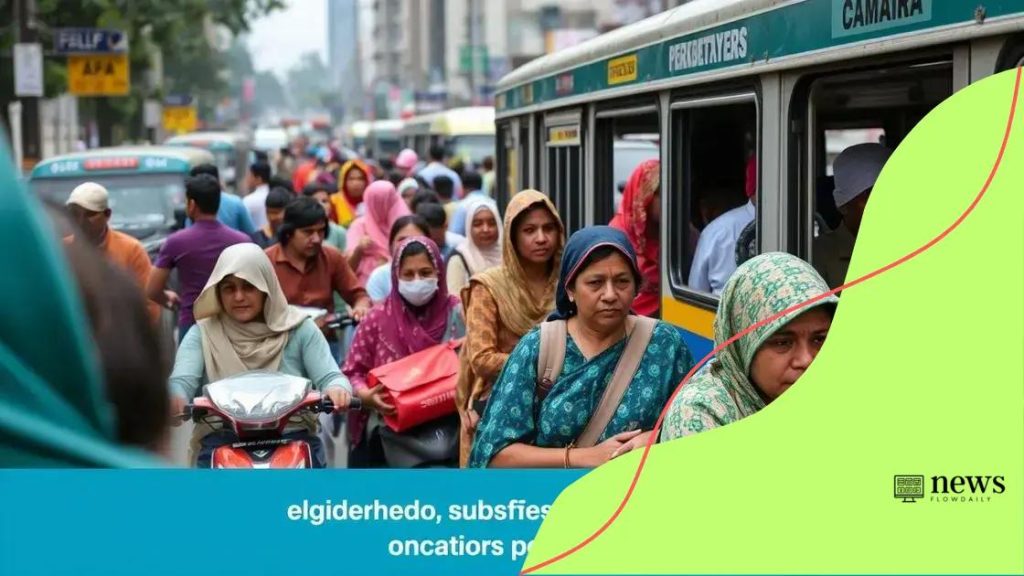Transportation subsidies: enhancing mobility for workers

Transportation subsidies enhance mobility for low-income workers by reducing commuting costs, increasing job access, and promoting economic growth within communities.
Transportation subsidies: enhancing mobility for low-income workers is a crucial topic that deserves our attention. Many individuals struggle with commute costs, impacting their job opportunities. How do these subsidies actually make a difference? Let’s dive in!
Understanding transportation subsidies
Understanding transportation subsidies is pivotal for creating fair access to jobs for everyone. These subsidies are financial aids designed to lower the cost of commuting for individuals, especially for low-income workers. By making transportation more affordable, we can help people reach job opportunities that may be otherwise out of their financial reach.
Types of Transportation Subsidies
There are various types of transportation subsidies that can significantly impact economic mobility.
- Direct fare subsidies: This reduces the upfront cost of public transportation for eligible individuals.
- Flexible transportation options: This includes programs like rideshare subsidies, which can help in areas where public transport is limited.
- Employer incentives: Some companies offer transportation allowances to employees, encouraging them to use public transport.
These approaches help in effectively reducing barriers that low-income workers face. When individuals can travel more affordably, they are more likely to accept job offers or attend interviews. Additionally, access to reliable transport can lead to better job retention, as workers can commute to their jobs consistently.
Benefits of Transportation Subsidies
The benefits of implementing transportation subsidies are extensive. They not only support individuals but also benefit communities. For example, reducing traffic congestion is a major advantage, as more people use public transport.
- Environmental impact: More public transport usage lowers car emissions.
- Economic benefits: With improved access, local economies flourish as workers can contribute more consistently.
- Social equity: Transportation subsidies promote equal opportunity.
By providing reliable financial support for transportation, we open doors for those who may have been previously excluded from the workforce. It’s a step towards a more equitable society, encouraging inclusivity in economic participation.
The impact on low-income communities
The impact of transportation subsidies on low-income communities is profound. These financial aids alleviate the burden of commuting costs, allowing individuals to access jobs that were previously out of reach. By improving affordability, we create pathways for economic independence and stability.
Access to Employment
One critical effect of transportation subsidies is increased access to employment opportunities. When transportation costs decrease, more individuals can travel to work without the stress of financial strain.
- Greater job options: Reduced commuting expenses allow workers to seek a wider range of job opportunities.
- Improved job retention: Those who can reliably reach their jobs are less likely to abandon their positions due to transport issues.
- Support for remote areas: Subsidies can help connect workers in rural or underserved areas to urban job markets.
This increased access is essential not only for individual success but also for community growth. When residents engage with local businesses, they boost the local economy.
Community Health and Well-being
Moreover, transportation subsidies contribute to the general health of low-income communities. Affordable transport options lead to better healthcare access.
- Regular medical visits: Low transportation costs enable individuals to attend medical appointments.
- Healthy food access: Subsidies can help individuals reach grocery stores or farmers’ markets.
- Improved mental health: Reliable transportation reduces stress, leading to improved overall well-being.
By enabling better access to essential services, transportation subsidies enhance the quality of life for community members. Sustainable transport options help foster connectedness among residents, forging stronger social bonds.
How subsidies improve job access

Transportation subsidies play a crucial role in how job access is improved for many individuals. These aids lower commuting costs, making it easier for low-income workers to reach job locations without a significant financial burden. When transportation becomes affordable, it opens new doors for many job seekers.
Reducing Financial Barriers
One of the greatest benefits of transportation subsidies is the reduction of financial barriers that often prevent individuals from accepting job offers.
- Lowering commute expenses: Subsidies can significantly decrease the amount spent on bus fares or gas, allowing workers to keep more of their earnings.
- Access to a broader range of jobs: With financial help, workers can seek employment further from home, widening their job options.
- Affordability during job search: Subsidies allow job seekers to attend interviews without worrying about transportation costs.
When financial strain is alleviated, people feel less stressed and more motivated to pursue better job opportunities. Many companies are increasingly recognizing that accessible transportation directly influences hiring and retention rates.
Connecting Workers to Opportunities
Moreover, transportation subsidies help connect workers to opportunities that may be located in areas that public transport struggles to service effectively.
- Supporting underserved areas: Subsidies can establish connections from lower-income neighborhoods to bustling job markets.
- Encouraging economic growth: By fostering job accessibility, communities flourish as residents can work and spend money locally.
- Promoting remote work: Transportation aids can support those who work in different locations, making flexible job options more viable.
This connectivity is vital for economic mobility, allowing individuals to take advantage of positions that offer better pay and opportunities for growth. The overall impact on local economies can be tremendous, as increased employment rates lead to thriving neighborhoods.
Case studies of successful programs
Examining case studies of successful programs reveals how transportation subsidies can transform lives. Many cities have implemented innovative programs to enhance mobility for low-income workers, creating positive changes in community dynamics.
Program Success in San Francisco
In San Francisco, the Healthy Transportation Fund was introduced to support low-income families. This program aims to provide reduced transit fares and additional incentives for bike-sharing programs.
- Increased public transport use: After implementing the subsidies, public transit use surged by over 20 percent among participating families.
- Health improvements: More families began to rely on active modes of transportation, resulting in better health outcomes.
- Job accessibility: Participants reported improved access to job interviews and employment opportunities.
This program illustrates how targeted assistance can lead to significant social benefits.
Success in New York City
Another remarkable example comes from New York City, where the Access-A-Ride program offers subsidized taxi rides for individuals with disabilities or limited mobility.
- Reliability: The program has tripled the number of accessible rides available within the city.
- Greater independence: Users report feeling more empowered to travel for work, appointments, and social activities.
- Economic participation: Many participants find jobs closer to their homes that they can reach more easily with the program’s assistance.
These case studies highlight the transformative power of effective transportation subsidies. The success seen in these cities showcases the importance of committed resources and outreach to create effective and sustainable solutions.
Challenges in implementing subsidies
Implementing transportation subsidies presents several challenges that need to be addressed carefully. While these programs can significantly benefit low-income workers, various hurdles can hinder their effectiveness.
Funding Limitations
One major challenge is securing adequate funding for transportation subsidies. Many cities face budget constraints, making it hard to allocate money for these programs.
- Competition for resources: Cities must prioritize funding for essential services like education and healthcare, which often leaves transportation subsidies underfunded.
- Uncertain political support: Changes in government can shift priorities, affecting the stability of funding for transportation initiatives.
- Long-term commitment: Sustainable funding sources are necessary to ensure that subsidies continue to operate effectively over the years.
Adequate and consistent funding is essential for developing effective programs and ensuring that they reach those who need them the most.
Public Awareness and Outreach
Another significant issue lies in public awareness and outreach. Many eligible individuals are unaware of available transportation subsidies.
- Limited information dissemination: Programs may not effectively communicate the benefits and applications of these subsidies to potential users.
- Stigma around assistance: Some individuals may hesitate to seek assistance due to social stigma, impacting participation rates.
- Accessibility of application processes: Complicated application procedures can deter individuals from applying for subsidies.
Increasing awareness and simplifying processes are critical for ensuring that transportation subsidies effectively serve those in need.
Coordination Between Agencies
A lack of coordination between different agencies can also pose challenges. Collaboration between transportation, housing, and employment agencies is vital.
- Fragmented services: Without collaboration, residents may experience difficulties accessing transportation options.
- Duplicated efforts: Multiple agencies may create overlapping programs, wasting resources and confusing potential users.
- Consistency in policies: Aligning various agency goals can streamline efforts to implement effective transportation solutions.
These challenges make it essential for policymakers to work together to create efficient systems that support low-income workers and enhance their mobility.
FAQ – Transportation Subsidies for Low-Income Workers
What are transportation subsidies?
Transportation subsidies are financial aids provided to help individuals, particularly low-income workers, afford the costs of commuting to jobs.
How do transportation subsidies benefit low-income communities?
They improve mobility, increase job access, and enhance overall quality of life by making commuting more affordable.
What challenges are faced in implementing these subsidies?
Challenges include securing adequate funding, raising public awareness, and ensuring coordination among different agencies.
Can transportation subsidies lead to stronger communities?
Yes, by making it easier for low-income individuals to access jobs and services, transportation subsidies can foster economic growth and social equity.





